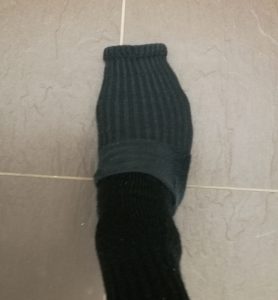Is self-quarantine early in an epidemic optimal, either individually or for society?
Individual incentives are easier to analyse, so let’s start with these. Conditional on catching a disease, other things equal, later is better. The reasons are discounting and the advances in treatment. A delay of many years may increase the severity conditional on infection (old age weakens immunity), but such long time intervals are typically not relevant in an epidemic.
Conditional on falling ill within the next year (during which discounting and advances in treatment are negligible), it is better to catch the disease when few others are infected, so hospitals have spare capacity. This suggests either significantly before or long after the peak of the epidemic. Self-quarantine, if tight enough, may postpone one’s infection past the peak.
Another individually optimal choice is to get infected early (also called vaccination with live unattenuated virus), although not if immunity increases very little or even decreases. The latter means that one infection raises the probability of another with the same disease, like for malaria, HIV and herpes, which hide out in the organism and recur. Cancer displays similar comebacks. For viral respiratory diseases, as far as I know, immunity increases after infection, but not to 100%. The optimality of self-quarantine vs trying to be infected early then depends on the degree of immunity generated, the quality of the quarantine, whether the disease will be eradicated soon after the epidemic, and other details of the situation.
Individual optimality also depends on what the rest of the population is doing. If their self-quarantine is close to perfect, then an individual’s risk of catching the disease is very low, so no reason to suffer the disutility of isolation. If others quarantine themselves moderately, so the disease will be eradicated soon, but currently is quite infectious, then self-isolation is individually optimal. If others do almost nothing, and the disease spreads easily and does not generate much immunity, then an individual will either have to self-quarantine indefinitely or will catch it. Seasonal flu and the common cold (various rhinoviruses and adenoviruses) are reasonable examples. For these, self-quarantine is individually suboptimal.
Social welfare considerations seem to weigh in favour of self-quarantine, because a sick person infects others, which speeds up the epidemic. One exception to the optimality of self-quarantine comes from economies of scale in treatment when prevalence is not so high as to overwhelm the health system. If the epidemic is fading, but the disease increases immunity and is likely to become endemic, with low prevalence, then it may be better from a social standpoint to catch the disease when treatment is widely available, medical personnel have just had plenty of experience with this illness, and not many other people remain susceptible. This is rare.
Herd immunity is another reason why self-quarantine is socially suboptimal for some diseases. The logic is the same as for vaccination. If catching chickenpox as a child is a mild problem and prevents contracting and spreading it at an older age when it is more severe, then sending children to a school with a chickenpox epidemic is a smart idea.
Reducing the duration of quarantine for vulnerable populations is another reason why being infected sooner rather than later may be socially optimal. Suppose a disease is dangerous for some groups, but mild or even undetectable for most of the population, spreads widely and makes people resistant enough that herd immunity leads to eradication. During the epidemic, the vulnerable have to be isolated, which is unpleasant for them. The faster the non-vulnerable people get their herd immunity and eradicate the infection, the shorter the quarantine required for the vulnerable.
For most epidemics, but not all, self-quarantine is probably socially optimal.
